It’s been just over a year since Minnesota adopted a new state plumbing code. One of the most conspicuous and annoying changes that was made to the plumbing code was the requirement for hideous dishwasher air gaps. A dishwasher air gap is an egg-sized device that gets mounted above the sink to help prevent contaminated water from draining back into the dishwasher.
These devices have been around for a long time, but they were never required in single family homes in Minnesota. Our old plumbing code used to say “Domestic use dishwashers may discharge into a sink, or discharge to a sink tailpiece or food-waste grinder if the discharge drain line is fastened as high as possible under the countertop.” That’s no longer good enough, however. The new code that was adopted on January 23rd, 2016 says the following under section 807.4:
No domestic dishwashing machine shall be directly connected to a drainage system or food waste disposer without the use of an approved dishwasher air gap fitting on the discharge side of the dishwashing machine. Listed air gaps shall be installed with the flood-level (FL) marking at or above the flood level of the sink or drainboard, whichever is higher.
The nitty-gritty details of exactly how this is being enforced throughout Minnesota is up to the professional judgment of the plumbing inspectors for each municipality. From what I’ve heard, air gaps are typically being required at the time that sinks or dishwashers are installed or replaced.
Installation Problems
Because these air gaps are a fairly new requirement, we’ve come across a lot of air gap devices that aren’t installed properly. To understand these defects, it’s helpful to understand how these devices function. The crudely marked-up photo below shows how they work.
Air gaps have an ‘in’ and an ‘out’. The water coming in on the right side of my drawing above is being forced by the dishwasher pump, but the water going out is simply draining through gravity. Because of this, it’s important for the ‘out’ hose to be larger than the ‘in’, as shown in the installation diagram below.
We commonly find the two hoses sized the same, as shown below. This is an improper installation.
The problem with this is that the undersized hose won’t handle all of the water flow when it’s no longer under pressure, which will cause the water to discharge out of the air gap, which should not happen under normal conditions. Here’s a quick video clip showing what that looks like.
The other installation error that we’ve come across has been improperly located air gaps. As you might guess from the video clip above, if anything goes wrong with the discharge hose, an air gap will spit out water. Air gaps should be located in places where that discharged water will go to the drain; not all over a countertop, and especially not underneath a countertop.
Are these air gaps here to stay?
I hope not, and I’m guessing not. Plumbers don’t like them, inspectors don’t like them, and homeowners hate them. The last building code requirement that we had in Minnesota that was this universally disliked by the public was the residential sprinkler thing. That lasted about six months. I’m hoping that something similar will happen with the requirement for dishwasher air gaps.
Oh, and for the record, dishwasher air gaps are definitely not something that we recommend installing during our home inspections. While dishwasher air gaps are technically required on new installations by code, we’re not code-compliance inspectors. As home inspectors, we get to make recommendations on stuff that makes sense to us. These don’t.

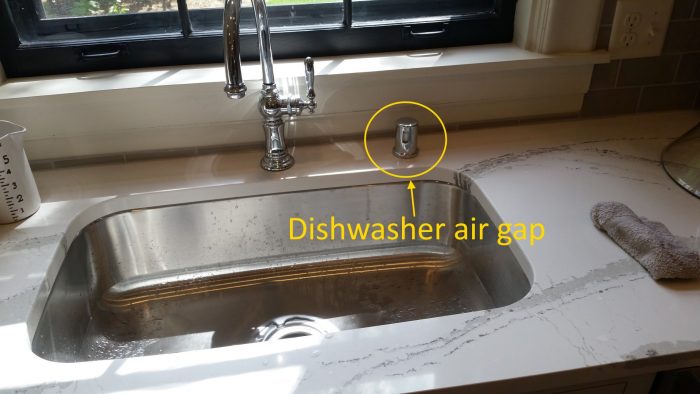
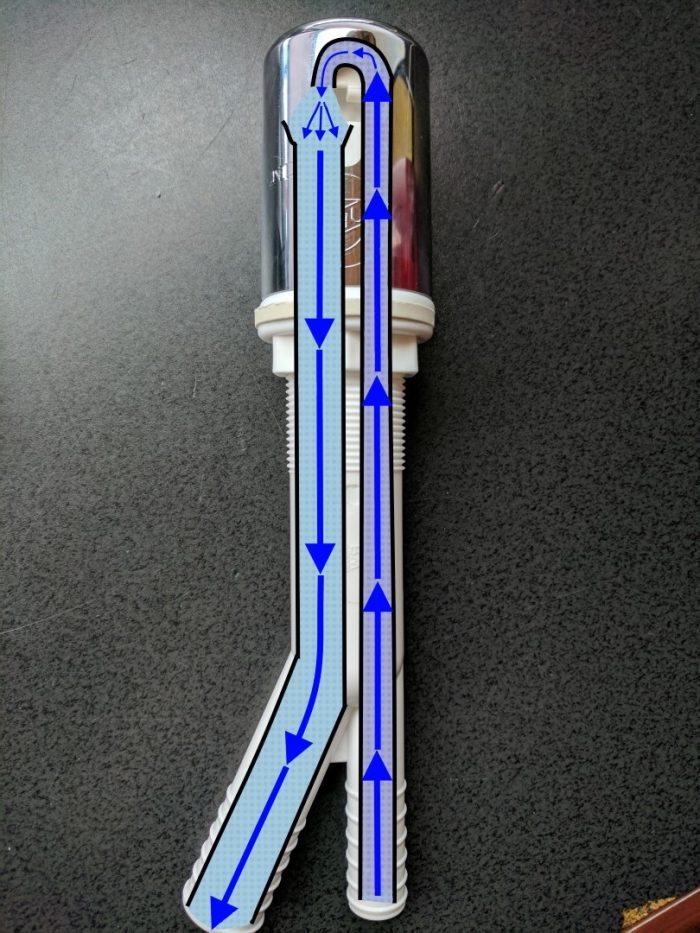
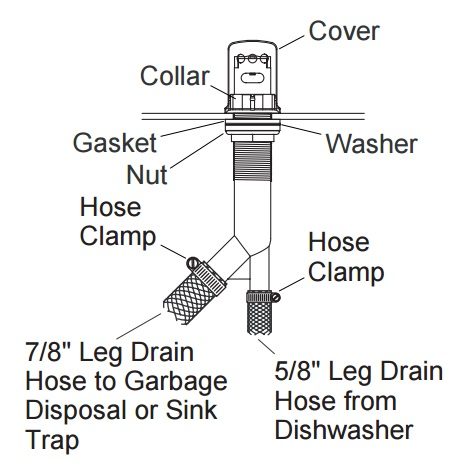
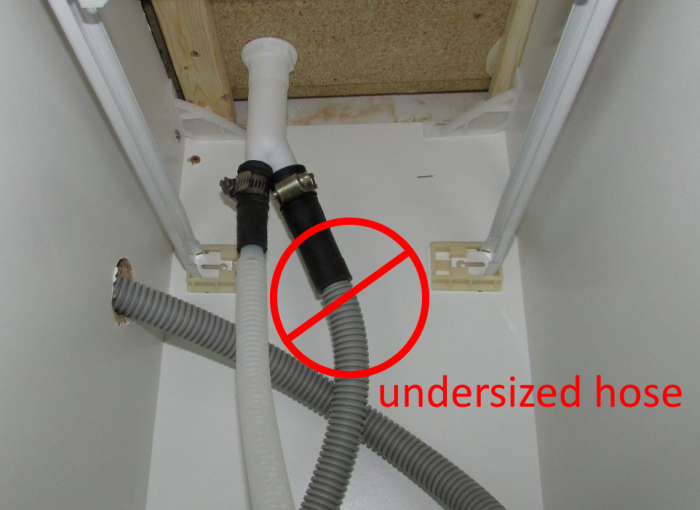
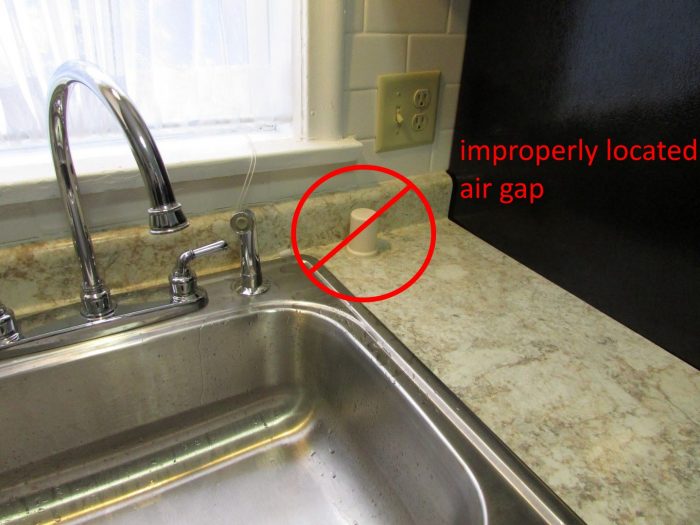
Raymond VinZant 058657PM
April 26, 2017, 9:50 am
I have to disagree with you as a third generation plumber and one with family in California, these devices have been in use on the west coast for over 30 years. People are not use to them here. But eventually they will be ubiquitous. I sit in on the state plumbing board meetings as member of the community. They have been discussed for removal but the board decided they would keep them. Unless the boards hand is pushed they will be maintained. I’m also a plumbing instructor at Midway Votech and a master plumber of over 40 years. I write nationally answering questions on the internet. I constantly get a customer asking why they have dirty water in their dishwasher. It is because once we, as plumbers install the first dishwasher, the second one is installed by the handyman or by the appliance guy. They simply run the line right from the tailpiece to the dishwasher itself. When an air gap is installed, one side is 1/2 inch and the other side 7/8. When the appliance guy comes in to install a new dishwasher, the only connection available is the air gap fitting, unless he changes out the 7/8 tailpiece. This forces him to reconnect to the 1/2 inch side of the air gap fitting.
Reuben Saltzman
April 26, 2017, 10:01 am
Thank you for reading and commenting, Raymond. What part do you disagree with?
Dave Riddle
May 2, 2017, 7:51 am
As a home inspector in Massachusetts I always recommend that clients attach the dishwasher drain line to the cabinet wall as high as possible under the sink. Adding a physical raised loop helps prevent backflow of contaminated water, but doesn’t necessarily prevent it. For under a dollar and about 10 minutes lying on your back, you can easily improve the odds of not getting that dirty water in your dishwasher. I’ve not checked it out, but I can’t help but wonder if the newer generation of dishwashers have air gaps built right in to the drain line at the back of the machine. I can definitely see where the physical air gap device above the flood level of the sink could be problematic when installed improperly.
Mariko Baerg
May 15, 2017, 11:37 am
All good to know – thanks for the helpful information!
Ronke Ladd
July 11, 2017, 10:18 am
Who is responsible for water spilling out of the air gap?
Is the dishwasher installer or the garbage disposal installer?
Reuben Saltzman
July 11, 2017, 12:01 pm
The dishwasher installer.